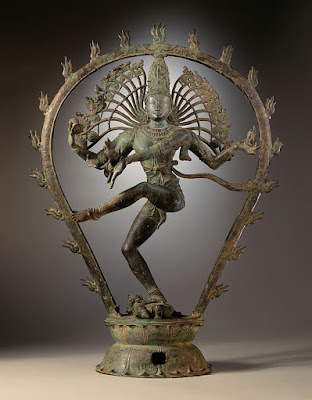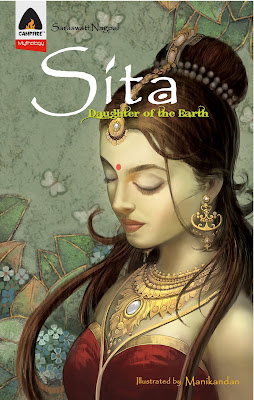Wikipedia Trails: From Nataraja to Serpent
"Nataraja"
The Nataraja is the depiction of Shiva performing his cosmic dance. He poses as the lord of dance and arts, typically holding fire in one of his hands, and is surrounded by a circle of flames. Shiva's dance was mentioned earlier in the semester, and I was interested in it as a possible topic for my Storybook because of how much I enjoy dance myself.
"Agni"
Following Shiva's dance, Agni means fire in Sanskrit but also represents the fire deva in Hinduism. Agni is mentioned in the Ramayana when she steps in the flames to prove her purity to Rama, and Agni is who delivers her unharmed from the fire. His mount is a ram, and I just overall like to read about the different deities in the Epics, especially those that represent the elements (like water, wind and of course, fire)
"Caduceus"
Agni is mentioned to also hold a staff in his hand while on his mount, and when I clicked on this link it somehow brought me to the symbol of the caduceus. Traditionally the staff of the Hermes in Greek mythology, it is now seen as a medical symbol in North America. Interesting enough, there doesn't seem to be a connection to Agni, but just that the caduceus is a mythological staff.
With a symbolic staff like the Caduceus, I couldn't resist seeing what the Wikipedia page on Serpents had to say about their symbolic nature in culture and tradition across the world. Serpents represent many things for different people, sometimes both good and bad omens. In some cultures it represents guardianship and in others fertility. In Hindu mythology, I've seen many snakes throughout the Epics, and even in the creation stories where Lord Vishnu is seen to be sleeping on a great serpent.
The Nataraja is the depiction of Shiva performing his cosmic dance. He poses as the lord of dance and arts, typically holding fire in one of his hands, and is surrounded by a circle of flames. Shiva's dance was mentioned earlier in the semester, and I was interested in it as a possible topic for my Storybook because of how much I enjoy dance myself.
"The Nataraja", Shiva as the Lord of Dance. Source: Wikimedia Commons
"Agni"
Following Shiva's dance, Agni means fire in Sanskrit but also represents the fire deva in Hinduism. Agni is mentioned in the Ramayana when she steps in the flames to prove her purity to Rama, and Agni is who delivers her unharmed from the fire. His mount is a ram, and I just overall like to read about the different deities in the Epics, especially those that represent the elements (like water, wind and of course, fire)
"Caduceus"
Agni is mentioned to also hold a staff in his hand while on his mount, and when I clicked on this link it somehow brought me to the symbol of the caduceus. Traditionally the staff of the Hermes in Greek mythology, it is now seen as a medical symbol in North America. Interesting enough, there doesn't seem to be a connection to Agni, but just that the caduceus is a mythological staff.
"Caduceus", also known as the staff of Hermes. Source: Wikimedia Commons
"Serpent (symbolism)"With a symbolic staff like the Caduceus, I couldn't resist seeing what the Wikipedia page on Serpents had to say about their symbolic nature in culture and tradition across the world. Serpents represent many things for different people, sometimes both good and bad omens. In some cultures it represents guardianship and in others fertility. In Hindu mythology, I've seen many snakes throughout the Epics, and even in the creation stories where Lord Vishnu is seen to be sleeping on a great serpent.





Comments
Post a Comment